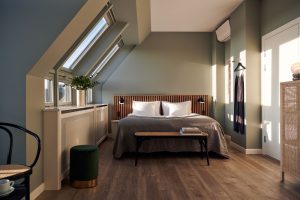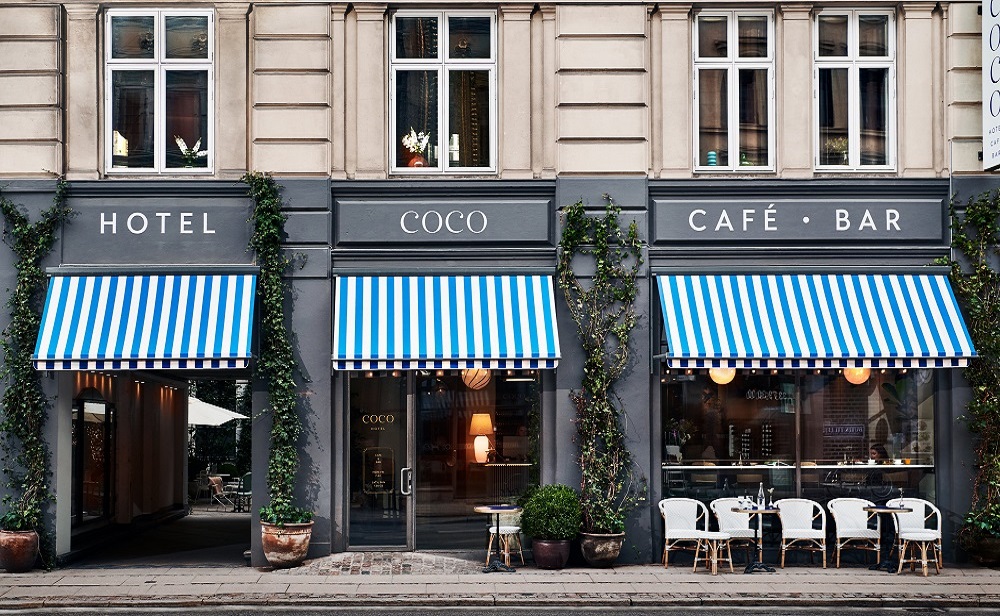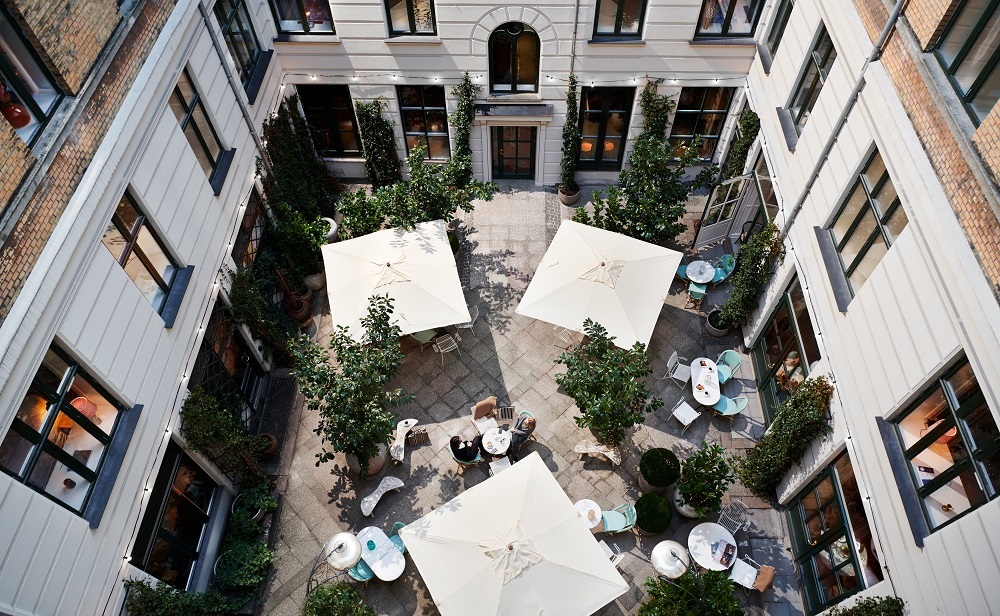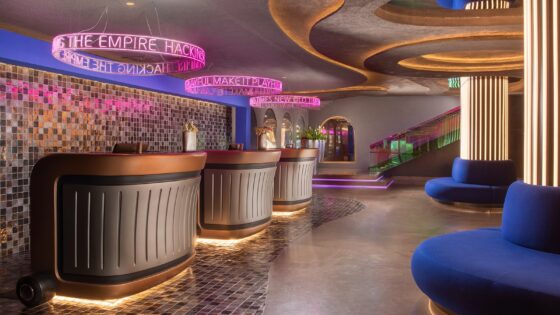Contemporary Copenhagen meets vintage Paris in the new boutique Coco Hotel. Colourful key in hand, Melania Guarda Ceccoli opens the door to take a closer look…

Grab your tassel key with your room number, fall asleep in crisp white organic cotton sheets and watch TV while eating in bed. You are in the Coco Hotel, the new boutique hotel in Copenhagen that mixes old style with a sprinkle of the cosmopolitan. The hotel offers 88 unique guestrooms, a lovely café and a quiet green courtyard, perfect for working or drinking with friends. The hotel caters for those travellers looking for exceptional value and those looking for a little more luxury, offering what every big city should have: bikes, toiletries, a Pilates studio, and of course, a ping-pong room.
- Image credit: Coco Hotel
- Image credit: Coco Hotel
Built in 1880, the building has a long history as a hotel. More recently, it was acquired by Cofoco in 2018, and the renovation process began. When it came to the interiors, the Coco’s design brief had three key points: the owner wanted to respect the architecture of the building, reuse and recycle as much as possible. This meant mixing vintage with new and, at the same time, meeting the needs of the multi-functionality of the building. The space functions as a reception, a hotel, a café, a cosy hangout, an office and a cocktail bar at night. Built in 1880, the building has a long history as a hotel.
The TONEN Agency was chosen for the interior design of Coco Hotel, a collaboration between Malene Bech-Pedersen and Mette Bonavent, both designers based in Copenhagen. The café on the ground floor is very similar to a Parisian apartment, and Tonen decorated the space exclusively with materials that age beautifully in leather, wood, brass and marble. The bar and various pieces of furniture are custom made for the hotel by a local carpenter. The Danish artist FOS made brass lamps and mirrored tables, while global icons like Thonet chairs and classic bistro tables added a taste of Paris to the mix.

Image credit: Coco Hotel
The 88 guestrooms are spread over five floors and vary in size and style: some are suites, some have gardens, some have connecting rooms, others have a garden or street views, and some are simple. TONEN chose to make them look less generic by painting different wall colours on each floor, mixing vintage with new and putting curated art on the walls. The walls on the first floor are painted a bright blue; the second floor walls are intense and vivid green; the third floor is creamy white, and the walls of the fourth and fifth floors are smoky grey. In addition to the standard rooms, the family rooms have PlayStation and toys for the younger guests.

Image credit: Coco Hotel
The more romantic penthouse suites have sofas, panoramic views and large bathrooms. Each room has its visible personality: new, classic and vintage furniture, patterned fabrics, walls with paintings, selected art books, magazines, printed fabrics, and lamps. Guests will encounter Thonet Bentwood chairs, Prouvé chairs, locally handmade wooden tables, Bauhaus-inspired trolleys, Michael Anastassiades lamps, hand-stitched leather seats and Helle Thygesen Art & Antiques handmade lampshades. All these elements contribute to the layered design of the hotel that transforms each space into an individual statement.
At the heart of both Cofoco and now Coco Hotel, is the desire to make a positive difference for people and the planet. That is why sustainability is such a big priority, and with this as a guiding principle throughout the design process, Coco Hotel has achieved Green Key Certification.
This principle runs through every element of the hotel. Café Coco primarily serves organic products, and you will find no plastic bottles in the minibar. All towels and bed linens in rooms are made from organic cotton. The entire building has been renovated with energy and water-saving solutions. Like Cofoco’s restaurants, the hotel is covered by sustainable energy from Cofoco’s solar park in Nees, North West Jutland. The solar power park is the size of nine football fields and produces more solar power than the restaurants and the hotel use combined, which means that they are self-sufficient with sustainable energy.
Main image credit: Coco Hotel






